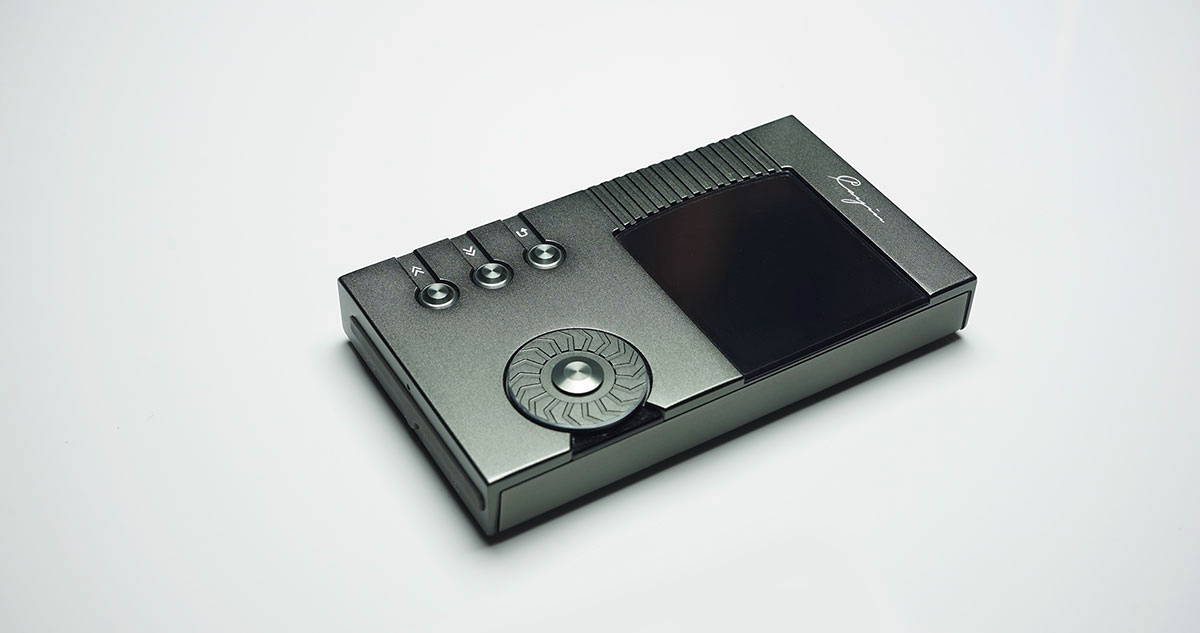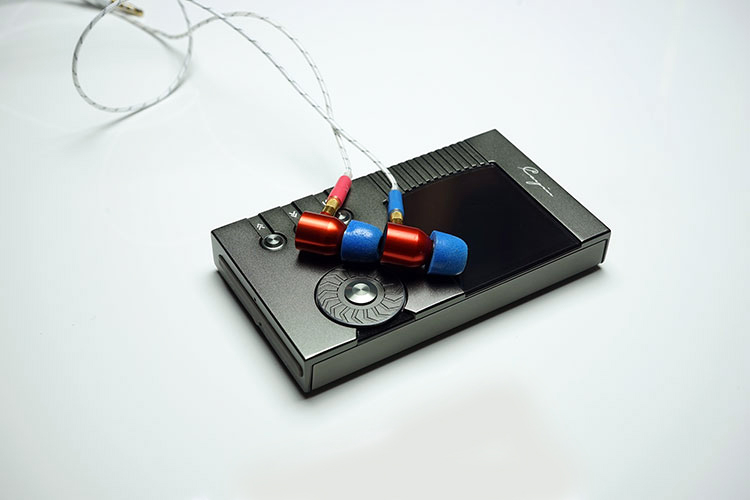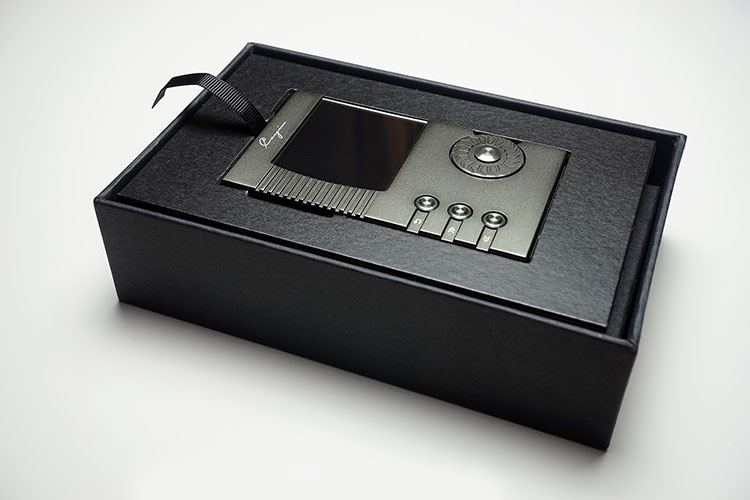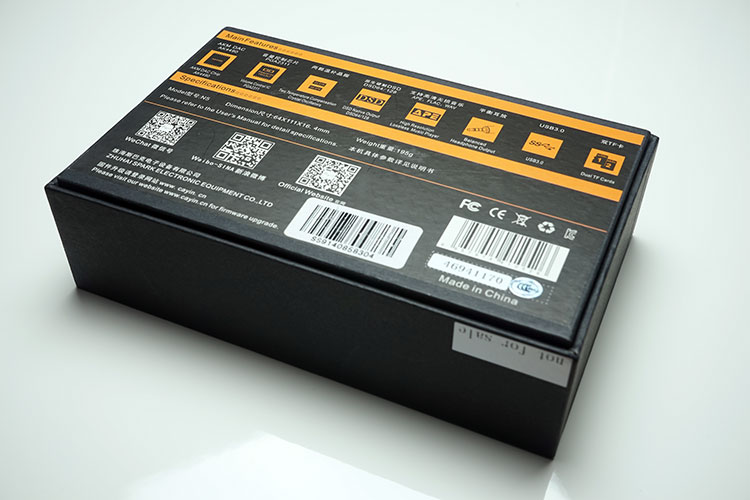Sound Impressions
Summary
It should come as no surprise to N6 owners that the N5 is a little ‘ying to the yang’ of the N6 tonal qualities.
Now do not get me wrong I loved how the N6 sounded. It was transparent, clear, clean, and wonderful on the micro detail but also very neutral and quite linear in many respects. It’s an audiophile’s dream in many ways but it is also not a DAP that hits you with energy, impact, and fun.
When you consider the warm C5 amp that Cayin came out with previously and that line of yummy tube amps they make you have to feel that Cayin knows what musicality sounds like.
The N5 tonally seems to be both the result of user feedback from the N6 as well as a slight return to the warmer roots of the C5. Call it a halfway house if you will.
The N5 steps back from the transparent and linear neutrality of the N6 and injects a touch of warmth and a bit of energy (particularly in the mids and treble) to produce a fun-sounding signature yet remains reasonably balanced with good detail.
It is not as resolving as the N6, perhaps a shade smaller on the soundstage also, and not as tight or defined in the bass response but it makes up for that with a more intimate and forward presentation that is more about “pick-up and play” than anything critical.
I would hesitate to call this a lush or overly warm DAP, though, bass has a nice warm sheen to it, mids are energetic but there is a snap in its attack, especially in the upper mids and lower treble that brings a level of peakiness that doesn’t always pair well with bright headphones.
However, it sounds good with cans and IEMs with laid-back or attenuated treble profiles.
Bass
Everything is in degrees of context with the N5 tonally so whilst I say the bass is slightly more colored and emphasized than the N6 you have to remember the N6 was quite flat and linear in comparison.
In context also, the bass on the N5 is not that dominating nor is it tremendously thick and slow. It does have a slight decay linger which means it is not as tight or speedy as the N6 but in return, you get a slightly more liquid feel to the N5 bass. The Sub-bass extension is quite good actually but a little soft and not as detailed as the N6.
There is also a slight accent on the mid-bass response of the N5 bass presentation that helps generate useful impact when required on heavier-hitting rock and EDM.
The mid-bass impact is weighted but not as much as the older X5 Gen 1, more akin to the AP100 and X5ii level of bass response. This is a very likable, neigh musical, bass signature and whilst it’s not the last word in definition and accuracy it does have very good weight and feels relatively coherent.
Mids
Mids on the N5 are energetic, slightly forward-sounding, and intimate. Instrumental separation is good with a very pleasurable and natural-sounding timbre that never sounds too edgy but has a nice snap to its attack.
The detail is quite good overall with decent body and zero low-end suck-out meaning bass and rhythm guitar work on the low-end sounds suitable crunchy and authoritative. There is nothing lean about this signature.
You won’t get the same levels of clarity and separation as the N6 mid-range, it’s more about width than depth with the N5 so it doesn’t quite have the same level of spaciousness but compared to something like the AP100 and X5ii it is competitive.
Vocal presence is slightly elevated and full sounding with plenty of texture and detail. The attack still has a tiny bit of sharpness but thankfully sibilance is negligible, particularly with male rock vocals. Husky female vocals also work particularly well.
Audiophile standards such as Diana Krall sounded warm and inviting. Lesser known acts such as Carlo Emerald (Krall lite I guess, but with more spark) who tend to have that lazy jazz swagger vocal performance sounded clear and detailed. Full-blooded soul vocals such as Iyeoka sounded very much at home with the N5 energetic and warmish signature.
Treble
Lower treble performance on the N5 continues that energetic feel of the mid-range with plenty of snap in the attack though thankfully, just like the upper mid-range, it avoids sounding overly peaky or sibilant. Percussion work is quite sounding and clear as a result but avoids any irritating splashiness.
The upper treble is quite as present as the rest of the response but it does sound very smooth and easygoing. Articulation is good if not quite as resolving or refined as the N6 and it doesn’t convey the same level of air and spaciousness but once again it does trade that up for a more natural and forgivable sound.
Soundstage and Imaging
The N5 is a more forward sounding and intimate DAP than the N6, trading depth for width and mid-range performance in particular. Unlike the C5 and N6 it does not have that same holographic feel to its staging qualities nor does it have the same level of black background as the N6.
Again this is contextual because, in its own right, I found the N5 to have decent air and space in general, particularly in the bass performance if not quite as extended in the treble response.
Imaging does take a very slight hit due to the preference for width over depth. Perception being front row you get that in the pit or mosh pit feel which is energetic, vibrant, and engaging but at times, spatial cues were a bit on top of each other once things got complex.
I do not see the N5 as the go-to DAP for large-scale orchestral works and complex large-scale tracks, leave that to the N6’s better imaging. Instead, use the N5 for gritty rock, punk, and EDM club music, there is a lot more character and soul in these genres that mesh well with N5’s signature.
Synergy
One of the big selling points of the N5 is the ability to switch from regular single-ended output to a 2.5mm TRSS balanced output. It is one of the key differences between the N5 and the rest of the mid-fi DAP pack.
IEMs
On single-ended the efficiency is good and hiss is low for IEMs. It is sensitive enough to handle the Campfire Audio Jupiter at the default 20 step (low gain) setting when turned on and just a few steps higher for the Shure SE846.
Higher-up flagship CIEM such as the incredible 64 Audio A12t also sound perfectly fine between 20 and 25 steps (low gain) with zero hiss or background noise. In short the N5 can cope with IEMs of varying efficiency levels in single ended mode.
In balanced mode, the noise level gets a bit too high and hiss starts creeping into sensitive IEMs. However, I loved the balanced mode response when the music got going; better dynamics and control all around.
The A12 was one of the better-behaved CIEMs when it came to noise control on balanced mode using an SXCX24 2.5mm TRSS cable. Volume drops right down to 18-20 steps on low gain yet there was a definite improvement in staging depth over the single-ended output.
The bass response also tightens up nicely. Sadly, I did not have balanced cables for the lower end or MMCX to give you a definitive answer if that will be the case for all IEMs but certainly for IEMs such as the 50 ohms Harmony 8 (very low noise actually) and the A12 going balanced has an improved response.
Dynamic Headphones
Moderately efficient headphones such as the AKG K812 did prompt a rather large step in gain on the single-ended output to around 45-50 steps on high gain depending on the quality of the recording. Mind you that snappy attack on the N5 did not endear itself to the edgy treble performance of the AKG.
Too much lower treble energy can often tip the K812 in the “irritating category” so it’s not a match I would go for. Something like the Lotoo Paw Gold or AK380 has a more refined and smoother response out of the K812 than the N5. In fact, I would give bright or treble happy cans a miss with the N5. I called it a
The N5 paired very well indeed with darker more attenuated dynamic headphones such as the TMA-1 and the slightly flatter TMA-1 Studio. Once again the sweet spot seemed to be around 30 steps on high gain in single-ended.
Vocals were clear and smooth, low-end had decent grunt and body and that attack on the N5 lower treble worked a charm on the TMA-1’s more stubborn and laid back treble performance.
Planars
Planar headphones such as the PM-1 and PM-3 from Oppo sounded so much better though. The PM-1 was an excellent match with a more mellow top end that gelled very well indeed to the energetic snappy lower treble of the N5.
Bass performance was smooth and vocals very natural and convincing. Volume requirements on the PM series were much lower than the 32-ohm K812. Both the PM-3 and the PM-1 were comfortable on 30-35 on high gain.
Select Comparisons
The mid-fi DAP market is seriously competitive right now with FiiO, iBasso, Hidizs, Shozy, LP, and even AK (Junior) having a crack at it with varying results.
I think Cayin has done pretty well with the N5 in terms of features and sound quality compared to the other DAPs and choice might come down to one or two key things such as personal preference and existing gear.
FiiO X5ii
Probably one of the stiffest competitors to the Cayin N5 the FiiO X5ii is the last in the mechanical wheel series from FiiO as they put their efforts into the X7, (they could surprise us though, FiiO tends to do that). Pricing is close, and form and function are reasonably similar.
Both have dual memory card slots and digital outputs and both can act as a DAC to PC and Windows.
Technicalities
Both have a wide range of codecs including DSD. The one thing the N5 has that the X5ii does not have is that balanced output which could make a difference to a few people’s setups. Note the line out on the N5 is not a true line out, it does go through the amping section of the N5, unlike the X5ii which has a true analog line out.
The OS system is stable on both DAPs but the FiiO OS is a little bit more evolved than the N5. Having said that it does appear both use the same core framework as each other.
The N5’s use of the AK4990EQ DAC does mean it can deploy those filters over the X5ii which has no such capability but the difference is quite subtle, to be honest, and is not a game changer. In favor of the X5ii, it does have OTG capabilities unlike the N5 meaning memory expansion is up to 2TB.
Tonality
If this was the X5 gen 1 I would pick the N5, no contest but the X5ii addressed that metallic-sounding upper register in the first gen quite exquisitely.
Tonally the X5ii is a bit cleaner sounding than the N5 but with a bit less energy, particularly in the mids and treble. It doesn’t have that sharpish attack of the N5 in the lower treble though but vocals do sit back a bit more than the N5. Bass on the X5II is tighter though than the N5’s fun but slightly soft profile.
Overall the X5ii comes across as the more refined option with a slightly softer attack whilst the N5 comes across as the more forward of the two with a vibrant mid-range and vocal performance but with a slightly sharper attack.
Matching wise the X5ii is probably the more flexible and consummate performer of the two and can work across a very wide range of cans and IEMs. The N5 is less flexible but with dark, smooth, or treble attenuated headphones the N5 has a lot more ‘pop’ and musicality than the X5ii.
iBasso DX80
Technicalities
The DX80 distinguishes itself from the N5 in several ways not least in utilizing a large touchscreen as well as hardware button controls. I have always felt iBasso’s hybrid system is perhaps the best solution for on the go use of DAPs.
Hardware buttons in your pocket, a touch screen for low-quality light, and just general pimping of album art and options for a more sophisticated OS such as Android. Yet the N5 OS is probably faster and more stable than the prettier DX80 OS even without the touchscreen.
The DX80’s latest firmware is pretty good but swiping is still a bit on the slow side. The DX80 screen is not at the level yet of the X7 touchscreen experience. Between the N5 and the DX80, the relevance of the touch screen is not such a big difference maker. Perhaps with future firmware on the DX80, it will.
In other areas, points are scored and lost by both daps. In the favor of the N5, you have USB 3.0 over 2.0 and balanced output over just single-ended with the ability to DIY your theme colors and layout.
For the DX80 though you have a longer battery life at 13 hours over 9 hours, dedicated line out and optical out functionality. DAC chips are both 24/192 DSD128 capable and amping wise both have similar single-ended ratings though the N5 edges ahead by 50mW using its balanced output.
Tonality
The DX80 has a slightly softer warmer edge to the N5 particularly in the upper midrange and treble so it doesn’t feel as sharp sounding on percussion and some vocals. However, it lacks the dynamics and clarity of the N5 particularly in the vocal performance which is more forward and “bigger sounding” on the N5.
The sub-bass response on the DX80 has a little bit more roll-off compared to the N5 and whilst the DX80 mid-bass is full sounding it doesn’t carry the same impact nor does it feel as tight as the N5. Not that the N5 is the tightest bass in the world either so once again it is all about context.
Overall the DX80 is the more forgiving and warmer of the two and probably the best for long non-fatiguing listening sessions. It has an improved vocal presence over the DX90 and less of an edge in lower treble performance than the N5. However, it is also the least dynamic of the bunch and lacks the overall clarity of the N5.
Shozy Alien (Gold Edition)
Technicalities
The Alien from Shozy is just about the polar opposite technically to the N5. It doesn’t have an LCD screen, it doesn’t have anything fancy like filters, gain control, or digital/analog outs like the N5 never mind a balanced output option.
It certainly cannot compete in the power stakes either. For the iGadget fans of today, the Alien is the antithesis of what people think a DAP should look like.
Tonality
Tonally, however, it is a marvel, a joy, and simply sublime for the price. The original silver edition was that too and all but suffered from an unhealthy level of noise with quite a large amount of sensitive IEMs, something which the N5 in single-ended mode largely avoids.
However, the new gold edition at roughly $250 has a significantly lower noise level, a bit more low-end body, and a cleaner treble response but still retains a wonderfully smooth and full-sounding vocal performance and a natural-sounding midrange.
Vocals on both are forward but the Alien vocals to me sound a bit more natural with a slightly softer flowing edge to the cleaner vocal performance of the N5. The N5 does hit harder though and if you are after a bit of bass impact and rumble the N5 is more convincing.
That doesn’t mean the Alien doesn’t have the chops, it just isn’t as emphasized as the N5, particularly in the mid-bass response. Soundstage and instrumental separation on the Alien was particularly good with a slightly more holographic sound than the shallower-sounding N5.
Our Verdict
Cayin has put a lot of thought into how the N5 should look and feel as well as how it should sound. Various audiophile community platforms have also played a significant role in how the final product would also be received so I am glad they went for a fun musical sound making it a nice compliment to the more analytical sound of the flagship N6.
As I write though Cayin is developing the i5 which will be their first touchscreen DAP and it is not clear if it will sit side by side with the N5 or N6, we shall have to see but it is a slight concern for the N5’s longevity.
Hardware-based DAPs with non-touch screen components are starting to become a little less prevalent in the market and the audience is becoming less and less receptive to these types of devices. Old-school people like me (or possibly you) love them.
Cayin N5 Technical Specifications
Phones Out (Bal)
- Power rating: 300mW+300mW(@32Ω)
- Frequency Response: 20-20kHz(±0.2dB,Fs=192kHz);5-50kHz(±1dB,Fs=192kHz)
- THD+N: 0.006% (1kHz,Fs=44.1kHz;20Hz-20kHz,A-Weighted)
- Dynamic Range: 108dB(20Hz-20kHz,A-Weighted)
- SNR: 108dB(20Hz-20kHz,A-Weighted)
Phones Out (Single End)
- Power rating: 200mW+200mW(@32Ω)
- Frequency Response: 20-20kHz(±0.2dB,Fs=192kHz)5-50kHz(±1dB,Fs=192kHz)
- THD+N: 0.006% (1kHz,Fs=44.1kHz;20Hz-20kHz,A-Weighted)
- Dynamic Range: 108dB (20Hz-20kHz,A-Weighted)
- SNR: 108dB (20Hz-20kHz,A-Weighted)
- Output Impedance; 0.26Ω
Line Out
- Output Level: 2.0V (@10kΩ)
- Frequency Response: 20-20kHz (±0.2dB,Fs=192kHz;THD+N: 0.005% (1kHz,Fs=44.1kHz;20Hz-20kHz,A-Weighted)
- Dynamic Range: 108dB(20Hz-20kHz,A-Weighted)
- SNR: 108dB(20Hz-20kHz,A-Weighted)
Battery
- 4200mAh 3.7V Lithium polymer ~9 HRS
- Charging: ~3 HRS (with 2A Charger, not provided)
- Charging Current: <=1500mA when charge with 2A Charger, <=500mA when charge with computer USB port
- Recommended Headphone impedance Range: 16-300Ω
Music Format (Local Storage)
- DSF, DFF, SACD-ISO: Native hardware decodes DSD64 and DSD128
- APE: Up to 192kHz/24Bit(Support Fast and Normal compression only )
- FLAC, WAV, AIFF: Up to 192kHz/24Bit
- Support: ALAC, WMA, AAC, Mp3
USB Audio(DAC)
- USB Mode: Asynchronized USB Audio 2.0 Class
- DSD: Support DoP (DSD64)
- PCM: Up to 192kHz/24Bit
- Windows: Support (Driver required); MAC OSx: Support; iOS: Not support; Android: Not support




